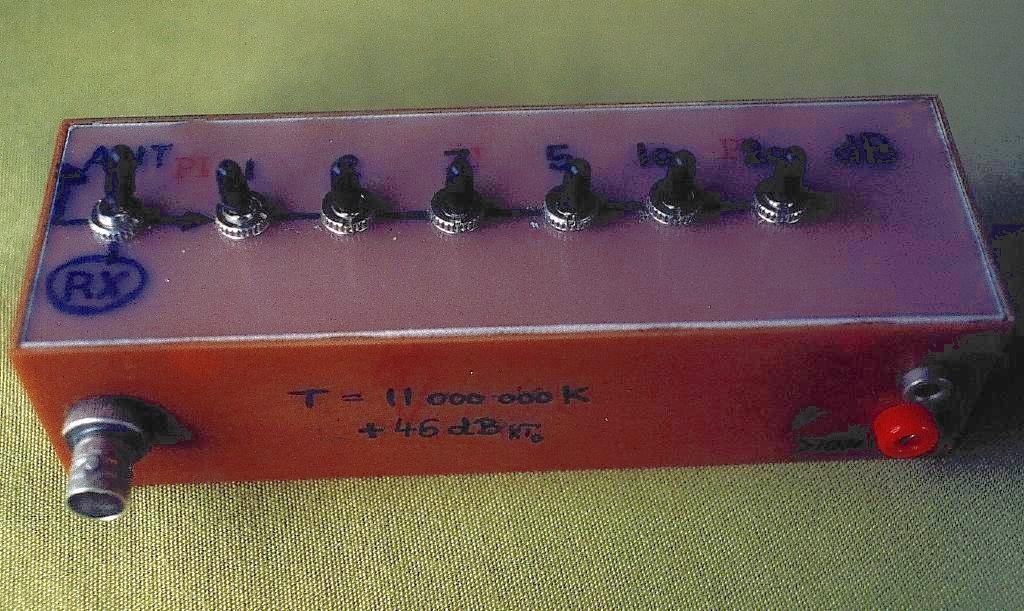
Calibrator Noise Source
Joachim Köppen DF3GJ Kiel/Strasbourg/Illkirch Summer 2003

The calibrator is a broadband noise source followed by a stepped attenuator. It is used in front of the receiver, providing a calibrated noise signal, so that all observed data can be expressed in terms of absolute units.
To build such a source is quite simple, but the calibration must be done against a properly calibrated noise generator. My source was checked against a RF 2020S calibrator unit that I had access to. The RF 2020S is designed and produced by R.S.Flagg AH6NM, and available from e.g. Radio Astronomy Supplies .

Here is an example of the calibration steps and some daytime background signal, as in the original data:
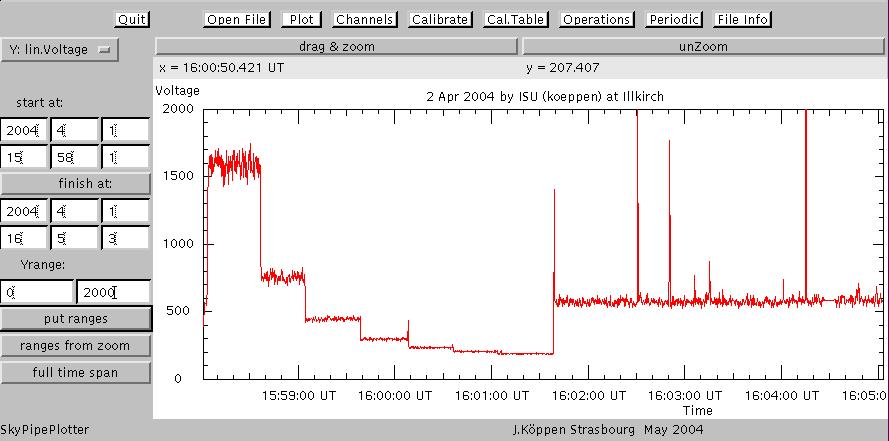
These data can then be calibrated in proper noise temperatures (kK = thousands of Kelvin):
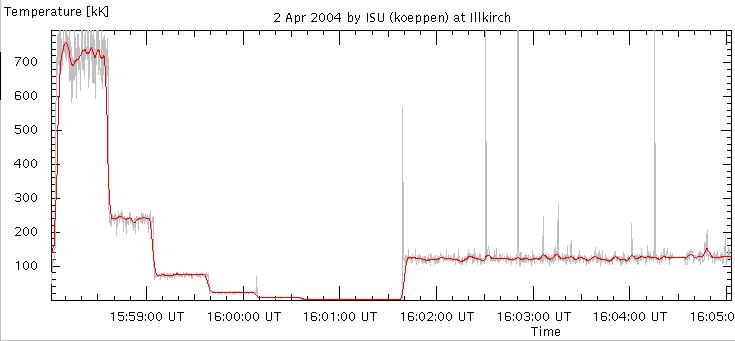
So we can read off the daytime noise level being about 120 kK. The data shown has also been processed a bit, by removing the sharp spikes and smoothing out the noise fluctuations.
A good technique is to start with the maximum level, and switch down to progressively lower levels by increasing the amount of attenuation by a constant value, say 3 or 5 dB. One measures the level at each value for a couple of seconds, and eventually reaches the minimum noise level. Then one switches off the noise source to measure the internal noise level, before one switches the receiver over from noise source to the antenna. This is done by the toggle switch on the extreme left; this convenient feature is also present in the RF 2020S source where one switches from "CAL" to "OPR".
The RF 2010 source - like my own shown here - has several toggle switches that can be combined to make any attenuation value up to maximum with a minimum step of 1 dB. While this is useful for noise figure measurements, one has to do some mental arithmetic to make calibration steps of e.g. 3 dB!
A much more convenient arrangement is done in the RF 2020S source by providing 6 steps of 0, 3, 6, 9, 12, and 15 dB by a rotary switch. This gives noise temperatures for instance of 800, 400, 200, 100, 50, and 25 kK, respectively. Because this type of source is much easier to use, I also built one and have it in operation at our installation at ISU:
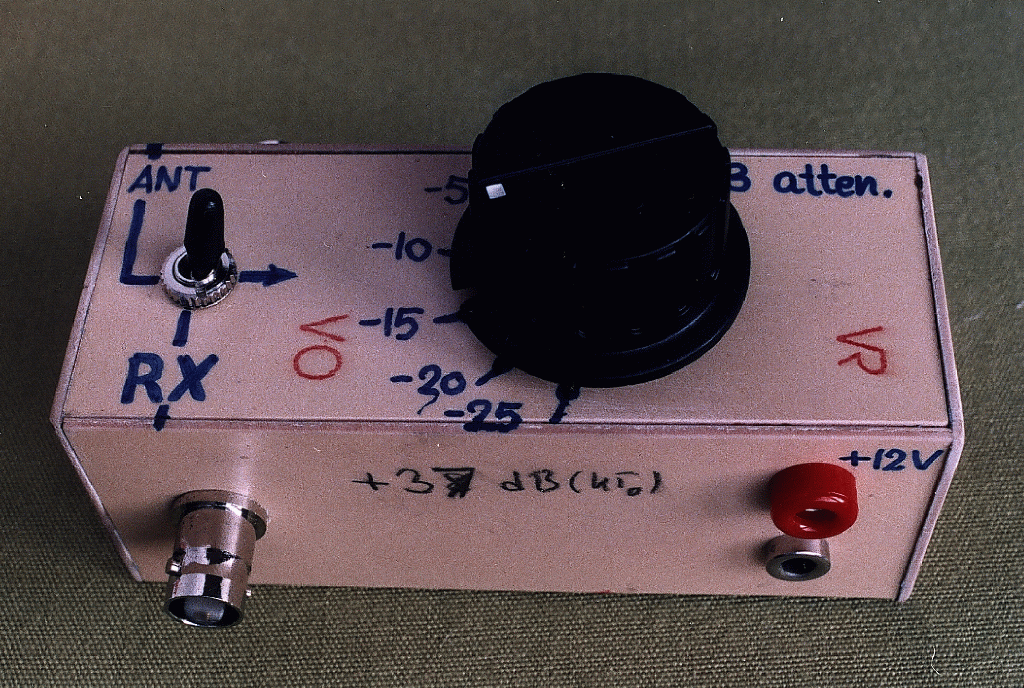
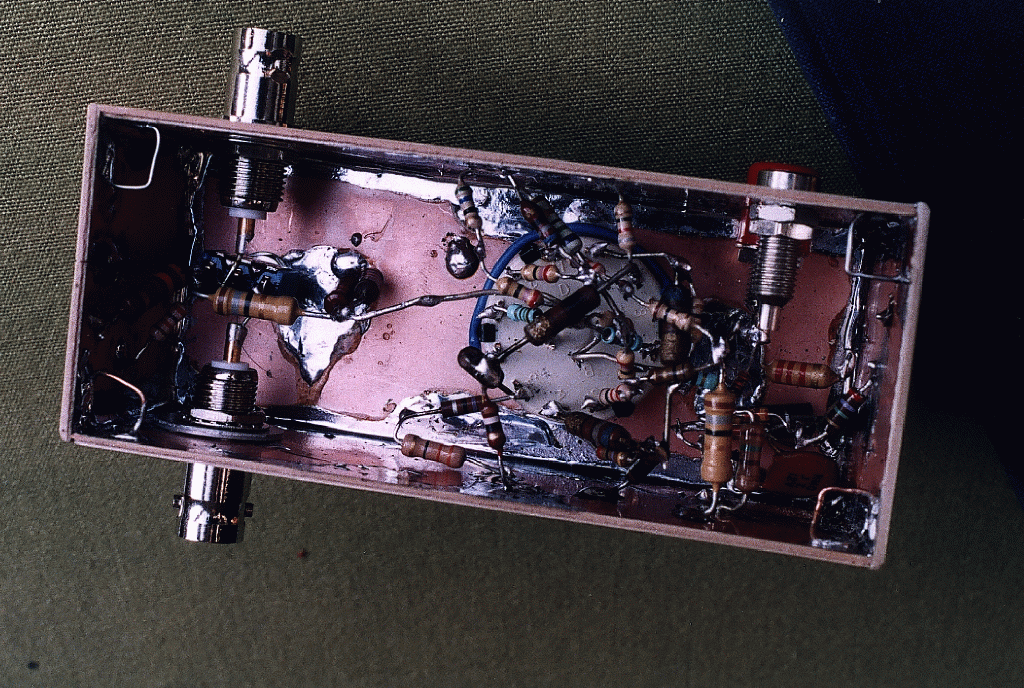
something about the noise levels encountered at ISU
Building a Calibrator
It is not terribly difficult to make your own calibrator, though the critical point is its proper absolute calibration... but it allows you to make quantitative measurements and comparisons in your data
To make a calibrator, one needs a noise source and an attenuator. As a noise source, one may use zener diodes which are operated near their reverse bias break-down voltage. When biased in forward direction, zener diodes pass current just like ordinary semiconductor diodes. When operated in the opposite sense, they do not conduct current if the applied voltage is below a certain value, but go into conduction, as soon as that value is exceeded. This characteristic makes them useful for providing constant voltages. This catastrophic break-down of the insulation of the semiconduction junction is accompanied with a strong noisy component of the current which can be used as a noise source well into the VHF region.
The best thing is to check zener diodes of various voltages and types, which gives the most noise: We build a small test circuit, which operates the zener diode in reverse bias, passes the current through a 50 Ohm resistor, from where the fluctuating component is fed into the Jove receiver. It is best to be able to vary the supply voltage or the current limiting series resistor.
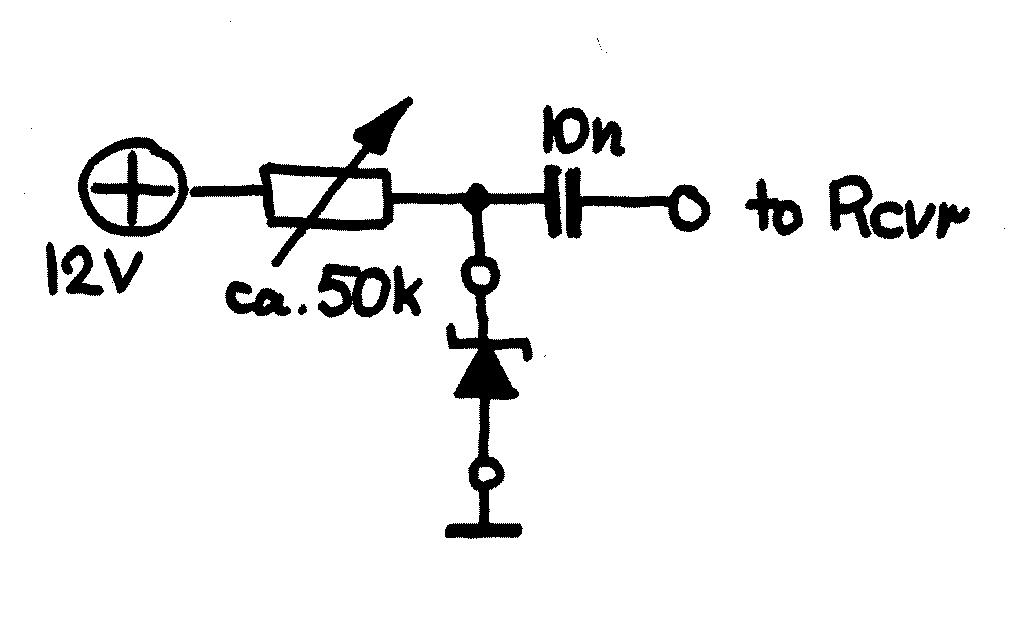
I find that the 8 Volt zener diodes produce a lot of noise, and that their maximum output is when they are just breaking down, i.e. at currents of less than 1 mA.
The suitable diode is then used in this circuit. To make the noise output independent of the supply voltage, the diode is fed from a constant current source made with a transistor and a couple of normal diodes which are forward-biased as to give a constant voltage drop (or one could use another zener diode). The values of the resistor have to be adjusted, as to give the desired current through the noisy zener diode.

This circuit gives a level of noise, which remains stable over a long time. For a number of years, I have used such a noise source for receiver measurements, getting most satisfactory results.
The other important component is the attenuator. This can be easily constructed from resistors of accurate values. One can either use close tolerance resistors (1 percent) or combine them from the ones available whose total values are verified with a digital Ohmmeter. A multi-position two-pole switch can put into the signal path one of a number of attenuators of different values. Or one makes up the desired value from a combination of attenuators switched in and out by double-pole double-position switches....
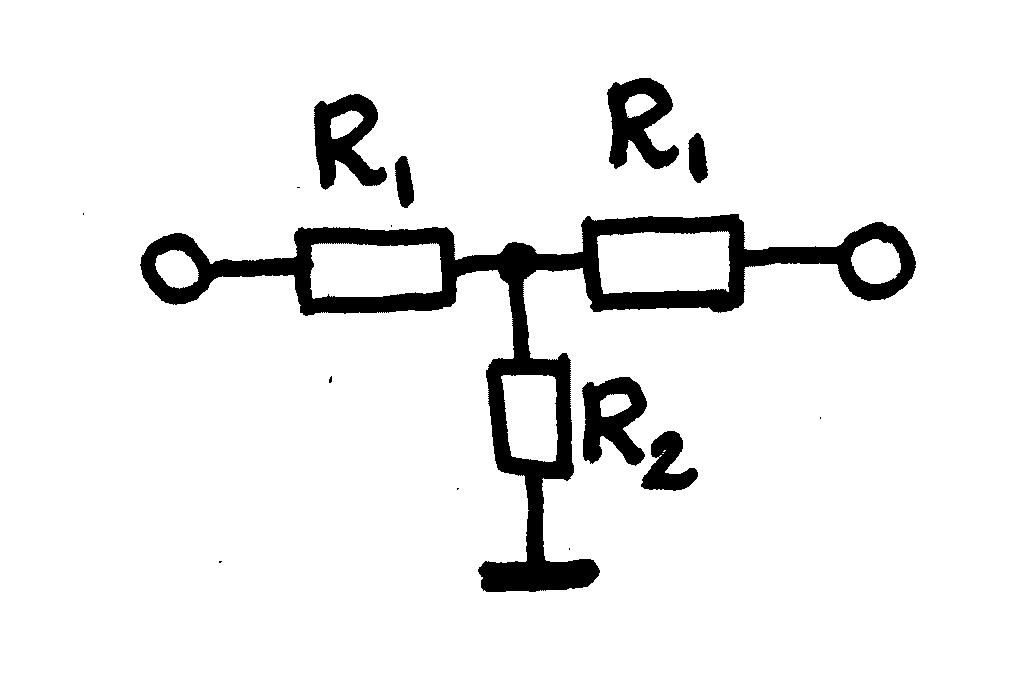
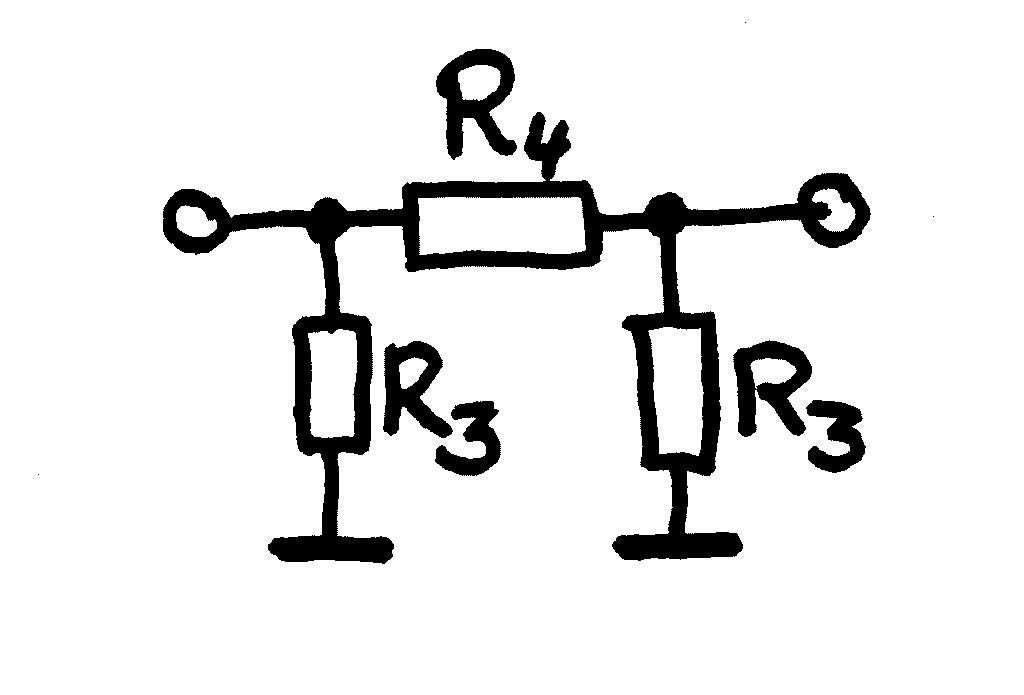
Each attenuator comprises three resistors, either in T or PI configuration. Both forms are entirely equivalent, and can also be mixed. The following table gives the values of the resistors for a 50 Ohm characteristic impedance. Values larger than 20 dB are done by combining two sections of nearly equal value:
| Attenuation [dB] | R1 | R2 | R3 | R4 |
| 1 | 2.88 | 433.3 | 869.5 | 5.77 |
| 2 | 5.73 | 215.2 | 436.2 | 11.61 |
| 3 | 8.55 | 141.9 | 292.4 | 17.61 |
| 5 | 14.01 | 82.24 | 178.5 | 30.40 |
| 6 | 16.61 | 66.93 | 150.5 | 37.35 |
| 9 | 23.81 | 40.59 | 105.0 | 61.59 |
| 10 | 25.97 | 35.14 | 96.25 | 71.15 |
| 12 | 29.92 | 26.81 | 83.54 | 93.25 |
| 15 | 34.90 | 18.36 | 71.63 | 136.1 |
| 18 | 38.82 | 12.79 | 64.40 | 195.4 |
| 20 | 49.91 | 10.10 | 61.11 | 247.5 |
To make the receiver look into a proper 50 Ohm impedance, independent of the zener diode, and to make the attenuator to give the precise values, it is a good idea to put fixed 6 dB attenuators both between the 50 Ohm load resistor at the zener diode and the other attenuators as well as between the attenuators and the output terminal.
Calibration: If one took care to get the resistor values for the attenuator close to the theoretical values, this uncalibrated noise source will permit relative measurements of the intensities, and quantitative measurements between data taken of the same station. But if one wants to compare quantitatively with observational data from other receivers, the noise source must be calibrated against a standard source. This is done for the RF 20x0 calibrators.
Since not everyone has the facilities to make a proper calibration, one may recommend a procedure for a rough absolute calibration: The noise figure of a RadioJove receiver is about 6 to 7dB, i.e. the internal noise is a factor 4 to 5 above that from a 50 Ohm resistor at standard temperature (18 C i.e. about 290 K), which makes 1200 to 1500 K. As a very rough guide, we can say that if we feed the receiver with external noise of the same temperature, the human ear will just notice the difference in loudness between (a) internal noise and (b) the combined internal and external noise. In other words: Switching on and off the noise source, we may identify the attenuation where the increase of noise is just perceptible, to a temperature of about 1000 to 2000 K. I find that on the Skypipe chart the difference between 1000 and 3000 K is not distinguishable, while the one between 3000 and 10000 K is clearly visible.
| Top of the Page | back to Main Page | back to my Home Page |